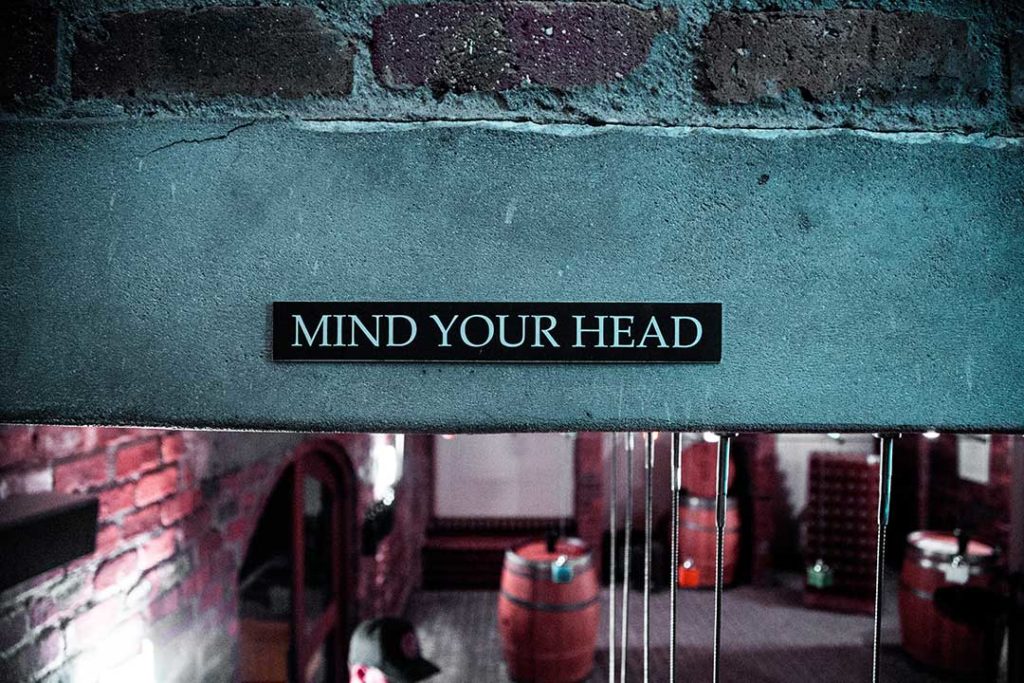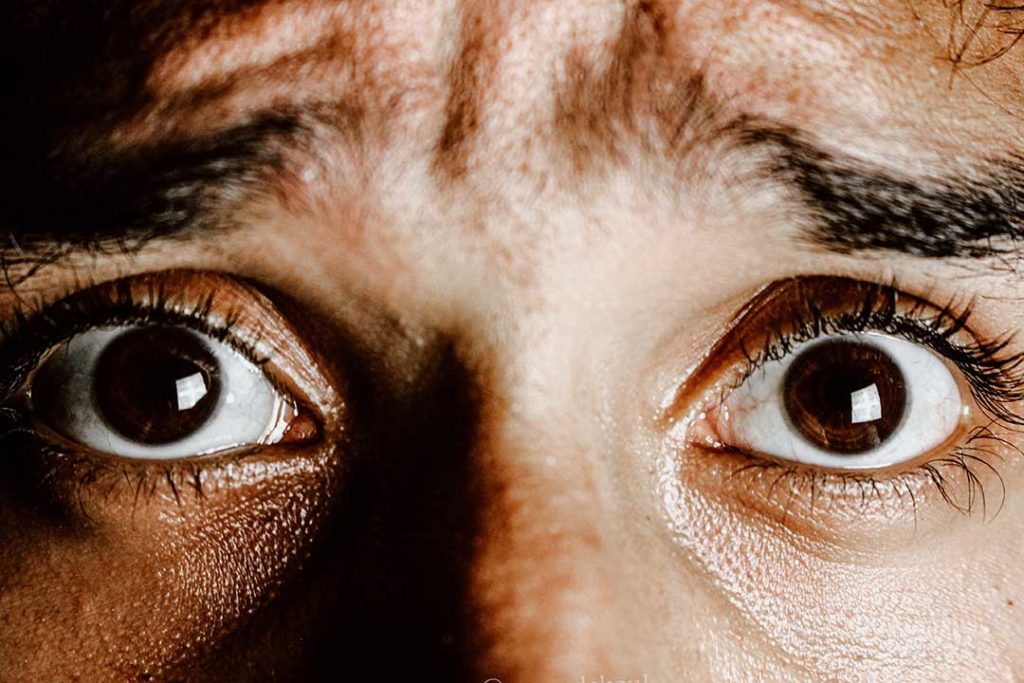Thinking of getting into shooting stock photography? Think again.
The industry is little better than a Ponzi scheme preying on the hopes and dreams of aspiring photographers.
Sure, a few people might be getting rich with stock photography, but it’s unlikely to be you.
In fact for the most part it’s not photographers at all. In this article I explain why.
Warning Signs

If a particular industry is booming, attracting new staff to your company will usually be pretty simple. And the most effective advertisement for your business will always be your existing employees.
Think about it; if the local snakeoil salesman buys a big new house and parks a Ferrari in the drive, you can bet that plenty of others are going to start asking how they can get into the snakeoil trade too.
In short, the more your employees talk about how they are making stacks of money by selling your patented snakeoil formula, the easier it will be for your HR department to find new talent. Obvious, really.
And yet the terms of service of several major stock photography agencies explicitly prohibit contributing photographers from revealing their income.
I wonder why that could be?
Golden Years

It wasn’t always like this though. Even just a decade or so ago, many amateur photographers were reportedly making over a thousand dollars a month from microstock sites.
That’s a nice chunk of extra income by anybody’s reckoning.
Meanwhile most professional photographers shooting stock saw even higher returns. And often merely as a sideline to their main photography work.
Indeed, for photographers who already had their expenses covered and regular earnings coming in from commercial or editorial work, firing off a few extra frames while on assignment and uploading them to a stock site was an easy way of moving their income from just-good-enough to great.
For many, these were goldrush days.
And yet the investment in time and energy was minimal.
Even the most banal and low-exertion images – a sunset, an open book on a table, a vase of flowers – might have netted hundreds, if not thousands, of dollars in downloads over time.
But such easy earnings were only possible because there was way more demand than supply.
New forms of self-publishing such as blogs were booming.
People needed images for online marketing, mail blasts, early social media. And yet photography was still a relative mystery to the average netizen. But this state of affairs wouldn’t last long.
The Coming Storm

In 2007 the first iPhone landed. Followed a couple of years later by Instagram.
These new technologies were so easy to use that almost overnight 90% of the world’s population became self-appointed masters of photography.
And having carefully honed their skills photographing their lunch on Instagram, by dinner time many of these “photographers” felt ready to embark on a career in stock.
Suddenly the ratio of supply to demand veered in the opposite direction.
A photographer could no longer be certain of making their rent check just by reeling off a few snaps of a Macbook, mug of coffee, and an analog SLR sitting on a table.
Some professionals actually had to start thinking about what they were shooting.
The gray-matter whirred away looking for a more original angle on the time-worn classics; smiling hipster chicks in broad-rimmed hats, rugged dudes with beards and tight pants, people standing on mountaintops with their arms outstretched.
But in the meantime several thousand near-identical images had already been uploaded to the cloud by enthusiastic (and now actually quite competent) amateurs.
Things were starting to get very uncomfortable.
A New Regime

But it wasn’t only photographers who began to feel the pinch. Agencies, too, found that the financial returns weren’t what they used to be.
The barriers to starting a stock website were now nearly as low as those for photographers wanting to enter the business.
Microstock libraries were suddenly everywhere.
And with a greater number of sources for the stock-buying public to choose from, competition for paying clients became much stiffer.
As you’d expect in such a scenario, the result was a significant drop in prices as the major players jostled for supremacy.
Not only did stock agencies start charging clients less to license images, but to compensate for the associated fall in revenue, they simultaneously increased their own cut of profits.
This left photographers doubly out of pocket; not only was their work now being sold at a lower price, but they also received a smaller percentage of that money than before.
Worse still, many agencies moved to a subscription-based pricing model.
No longer would clients have to pay to purchase an individual image, licensed according to usage.
From now on they would be able to access a fixed number – or perhaps even an unlimited number – of image downloads per month.
All for a set fee of perhaps just a hundred dollars or so.
Under this system, a photo that might once have sold individually for anywhere between a hundred to a couple of thousand dollars – depending on the licensing agreement – would now be more likely snag the photographer just a small handful of bills. Cents even.
It’s a Jungle Out There

Clearly the only way to make money in such a system is by adapting an Amazon-style approach to business; low margins, high sales.
As a photographer you may only see a few pennies for every image licensed, but if you can sell a lot of those images you might get back in profit again.
At least, that was the thinking.
But with so many stock sites out there, and so many photographers chasing the same money, it became a numbers game.
Only by uploading literally thousands and thousands of images could a photographer hope to see any kind of return.
The result? Stock sites swamped by a relentless tide of stinking photographic effluent, as increasingly desperate photographers learned to value quantity over quality.
Stock photography had never really been a realm of great artistic merit, but things only got worse now.
And while the resulting drop in quality might not have deterred the average cheapskate client looking for a rights-free image for a blog post, it will certainly have scared off many a higher-end client.
Precisely the kind of clients who, at the time, were the last still offering a few juicy licensing deals such as billboard campaigns.
The industry was left scratching around for crumbs.
This Ship Has Sailed

Today, even many longterm professionals on sites like Shutterstock are only making a few hundred dollars a month in sales.
For most, this will not even cover their expenses.
Some of these are photographers who have been shooting stock for twenty or thirty years already.
They will have put in a lot of legwork at a time when stock was still a viable move; i.e. when photographers were paid a lot more than $0.10 per sale.
They may not be having a great time of it right now, but at least the hard work has already been done.
But someone entering the stock industry today will only be able to put in the graft required to establish a successful stock business – if indeed there can be said to be such a thing now – if they have enough money to live on in the meantime, as stock certainly won’t be providing it.
Funnily enough, though, many of the photographers most vocally protesting that “stock’s not dead!” often turn out to have full-time jobs in unrelated industries.
But if stock was alive and well, surely most of them would have quit their day jobs long ago.
Researching what’s missing from the market, planning, shooting, editing, adding metadata and keywords to images.
All of these things take a lot of time. And then there’s the constant treadmill of having to upload several new images per day in order to appear in the site’s fresh content section.
Great if you can afford to pay somebody to do all this for you. But no matter which low-paid country you may have outsourced these tasks to, will you really see a return on that investment?
Some photographers will tell you things like “yeah, but I do a lot of that stuff while I’m on the train to my day job, or during my lunch break.” OK, but this is time in which you could be doing other more enjoyable things.
Of course, it’s entirely your choice how you occupy your free time. And there’s nothing wrong with pursuing a hobby you’re passionate about and are willing to work on for long hours without pay.
Quite the contrary.
But if, when calculating your earnings from stock photography, you aren’t factoring in the hours spent completing these tasks, your claim to make a profit through stock is not credible.
The business can only be considered profitable to you if your hourly rate works out to be competitive for the part of the world you live in.
Pay to Play

The race to the bottom has become so cut-throat today that some stock agencies charge clients as little as $10 a month for unlimited access to their entire image archive.
This is great for clients, but an absolute disaster for photographers – and, as it turns out, not really all that good for agencies in the long run either.
Even supposedly “photographer-friendly” sites such as 500px have a tendency to drive down prices to absurd degrees.
In one depressing case, a photographer had already agreed prices with 500px and was expecting to receive well over $1,000 for a bunch of sales.
Instead he was shocked to discover that once the platform had applied various customer discounts to the order and Paypal had taken its cut, the final payout was in fact little more than $50.
This included a single $748 license that was instead sold for a grand total of $8!
Still, there are even less competitive deals to be had than 500px. And many of these only seem to be getting worse with time.
Indeed, last year Gutterstock (a typo, honestly) changed it’s earnings structure in such a way that even veteran contributors with several decades worth of images on the site can find themselves receiving a mere 15% of royalties if their sales have slowed in recent years (and realistically most people’s sales have slowed).
Needless to say, this has not been a hugely popular move with photographers.
But surely the major players treat their photographers much better?
I wouldn’t bet on it.
Even back in stock’s heyday, when fees were still at least reasonable, heavyweight libraries such as Getty would “commission” big name advertising photographers to shoot specific scenarios missing from their catalog.
In many cases these were quite complex setups involving a whole cast of models and extras, and requiring major
lighting rigs, complete with a small army of assistants. We’re talking thousands of dollars just to produce one shot.
Getty’s production budget? Zero.
The photographer was expected to front all production expenses from their own pocket, and then recoup the money via future sales.
Now I don’t know about you, but that doesn’t sound like a very appealing offer to me.
Sure, it’s entirely possible that some photographers who took the gamble might have seen decent returns on this agreement. Maybe. For a few years at least.
But today?
One photographer on the Shutterstock forum recently complained that, despite having been “lucky” enough to have one of his images used for a Bank of America billboard campaign a couple of years back, his total payout from Getty for this was $14.25!
If you’re not familiar with the day rates that commercial photographers typically command for a custom advertising shoot, $14 is somewhere in the region of 1,000 times less than what a client of this caliber might expect to pay to use an image on a billboard.
And that’s just the photographer’s fee, without considering production expenses etc.
Of course, there’s a big difference between commissioning an exclusive shoot and licensing a stock image. But 1,000 times the difference? No.
Essentially stock photography has become a game of make believe. A role-playing scenario where (mostly) amateur photographers pay – with their time, talent, and actual money – to pretend that they are professionals.
Keep Your Eyes on the Ball

Things are so bad now that even those with a vested interest in maintaining a positive image for the industry struggle to pretend that stock is a worthwhile venture for photographers anymore.
I mean, even some stock agencies tacitly acknowledge that photographers won’t make any money by licensing images through them.
Instead they run monthly competitions with cash prizes, or tout “valuable industry feedback” as an incentive to get aspiring photographers to give away their images entirely free of charge.
When even a scam artist openly admits that there’s no ball under the three cups, but simply asks you to stand still while their accomplice rifles through your pockets, you know we’re living in end times.
And yet, despite paying their photographers precisely nothing, and charging users rock-bottom subscription fees, even these agencies now struggle to make money, as a new and terrifying specter looms on the stock photography horizon.
10,000 Flowers; But Who Will Water Them?

There are estimated to be over 350 million stock photos online right now.
All available to license for a tiny fraction of the money it cost their creators to produce them.
With every year that passes, this figure grows.
Some of the new additions flowing into the image swamp satisfy recently opened gaps in the market; perhaps depicting emerging trends, or technological innovations. Most, however, are just more of the same.
A search for the keyword “flowers” on the stock site Unsplash brings up over 10,000 images. The same goes for the word “food.”
10K hits seems to be the most results the site can display, so the actual number of relevant photos is likely to be considerably higher in both cases.
In fact, repeating the same search terms on rival stock site Pexels brought up 71.5K results for flowers, and 82.5K for food. That’s just two sites out of many.
Stock Dystopia

Taking a random sample of half a dozen food images on Pexels, though, they had been downloaded roughly 25K, 50K, 65K, and even 175K times.
In short, these photos are getting used.
So why aren’t photographers making money?
If you’re not already familiar with Unsplash, Pexels, and several other similar stock sites that have popped up over the last few years, the important thing to understand about them is that they don’t charge users for licensing photos.
Yes, you read that right; all the images on these sites are entirely free to use.
In most cases even for commercial projects. Obviously this means that contributing photographers don’t get paid either.
What’s more – and quite contrary to expectations – the quality of some photography on Unsplash etc. is actually pretty good.
And constantly improving. It’s certainly no worse than on many of the leading commercial stock sites. And in many cases actually a lot better! There’s even some variety in the style of photography on offer, too.
Thousands and thousands of photos of flowers, shot by hundreds and hundreds of photographers, in scores of different styles.
And all are free? How can a paid stock site compete with that? In this crazy world, even $0.10 per image starts to look like a rip-off!
A Download Is As Good As a Like

The unusual business model adopted by Unsplash and Pexels etc. is not our concern here.
More pertinent, however, is understanding why a photographer would choose to make their images available to the public for absolutely no monetary gain whatsoever.
There are probably a variety of reasons. But I’m guessing that in large part it’s because many contributors have become conditioned by social media “likes” to value digital kudos above all else.
You might not make enough money with your photography to even buy a lens cloth, but if one of your images has clocked up 175,000 downloads on Pexels, you are undeniably a photographer – of sorts.
In short, Instagram has created an entire generation of photographers happy to give their work away for free in return for virtual applause.
Not all contributors to free stock sites are amateurs looking for a confidence boost, though.
In fact an increasing number today are actually professionals. What’s in it for them?
Well, for those a little further along in their career, having their work on a free stock site might look like a pretty good way of getting noticed by potential clients; clients who, next time around, may be looking to commission a custom shoot.
And what better way to hook them in than by offering a few carefully chosen freebies so that they get acquainted with your work right now?
For those who actually want – need – to earn money with their photography, though, there’s little here that’s encouraging.
Indeed, with so much choice available entirely for free, anyone who pays to use a stock image today will need to have a very good reason to do so.
Of course, not everyone is looking for pictures of flowers. And there are undoubtedly still some good reasons for paying for photography.
These might include anything from being unable to find the right image for free, needing shots of very specific subject matter, or in a style that is not catered for by the free sites.
And for more discerning clients, exclusivity will also be an issue.
These are all quite legitimate motivations for spending money on a stock image. But as time goes by and the free sites continue to get better – while the paid ones get worse for all the reasons outlined above – the chances of this happening become increasingly slim.
Old Photos Never Die

Before I finish, I just want to point out that as bad as the situation is right now, it’s only likely to get worse as the number of images available online increases.
Stock photos aren’t like fresh produce that goes bad, or even clothing that eventually wears out.
Sure, all those images from the early ‘00s of people with iPods probably don’t get much love these days. But they aren’t going anywhere. Hell, give them a few more years and they’ll be considered retro.
Meanwhile, in the time it’s taken you to read this article, hundreds of thousands of new stock photos have been added to the great photographic landfill in the cloud.
Still feel like adding some more?
Final Words
What do you think? Have I overstated things?
Have you made money – I mean real money – from stock photography in recent years?
Let me know in the comments; I’d dearly love for you to prove me wrong!






